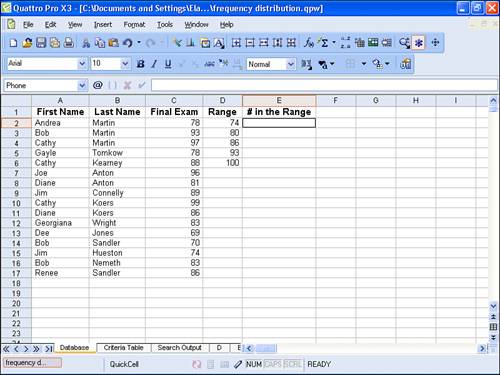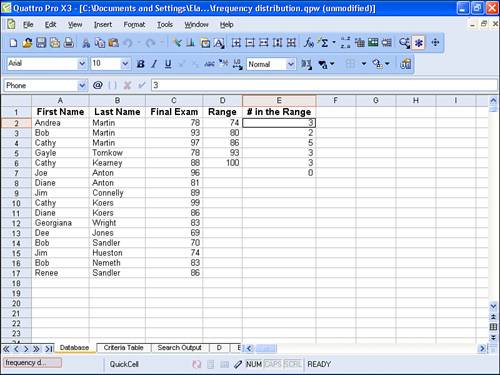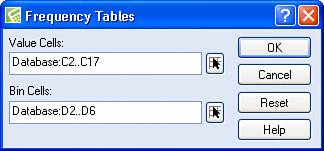Creating a Frequency Distribution
| Teachers aren't the only ones who use frequency distributions, but their purpose is certainly the most well known. A frequency distribution helps you identify the number of values in a list that fall between two numbers you specify. Suppose, for example, that you gave a final exam and the scores resemble those in column C of the spreadsheet shown in Figure 14.10. Figure 14.10. A spreadsheet set up to create a frequency distribution. To create a frequency distribution, you need to establish ranges of values called bin values that represent groupings. When Quattro Pro calculates the frequency distribution, it displays numbers beside each bin value that tell you how many of the original values were less than or equal to the corresponding bin value. In my final exam example, the bin values will tell me how many test scores were below 74, how many were between 75 and 80, how many were between 81 and 86, how many were between 87 and 93, and how many were between 93 and 100. Be sure to set up your bin value column so that
Open the Tools menu, point to Numeric Tools, and click Frequency. Quattro Pro displays the Frequency Tables dialog box (see Figure 14.11). Figure 14.11. Use this dialog box to set up a frequency distribution. In the Value Cells box, click the Range Picker and select the values you want to count; in this example, I selected the final exam scores that appear in C2.C17. In the Bin Cells box, click the Range Picker and select the cells containing the bin values; in this example, I selected D2.D6. Tip
Click OK. For this example, Quattro Pro displays the number of values in the Final Exam column that fell into each grouping represented by the bin values; based on the grouping in Figure 14.12, I've got a very nice bell curve going, with most test scores falling between 81 and 86. Figure 14.12. The frequency distribution tells me how many test scores fell within each range.
|
EAN: 2147483647
Pages: 128

